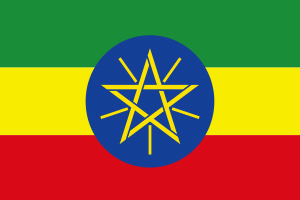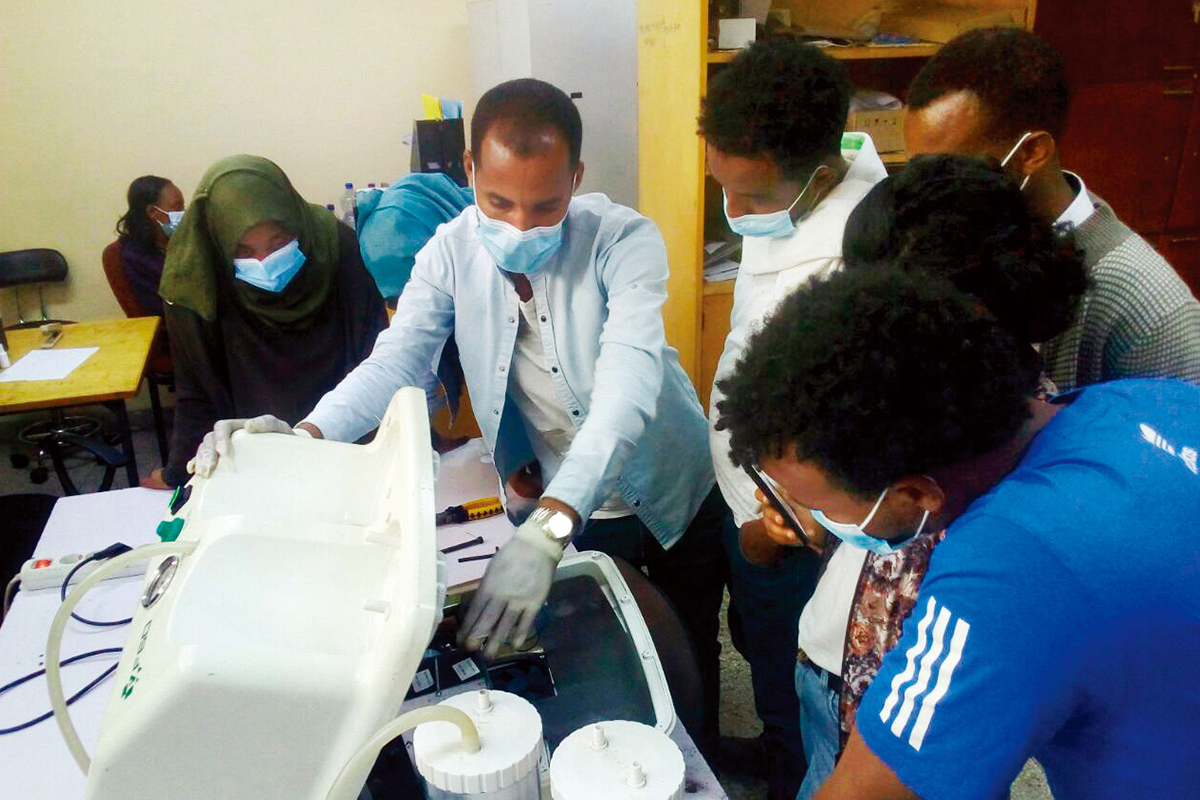본문영역

- Explore the World
- KOFIH Report Ⅱ
-
Building medical equipment
management and operation systemLaying the foundation
for healthcare and medical services
by transferring advanced know-how- Written by_ CHO Yun
-
Another pillar of the healthcare and medical support of the Korea Foundation for International Healthcare (KOFIH), in addition to the grant/loan hospital operation consulting, is building medical equipment management and operation system.
KOFIH aims to provide systematic and fundamental support commensurate with partner countries' demands based on the two pillars.
KOFIH is conducting a project to build a medical equipment management and operation system in Laos and Ethiopia. The project's purpose is to improve the quality of medical services in hospitals by reinforcing medical equipment previously provided and linking follow-up management such as education and advice.
It is meaningful as a project from a long-term perspective, such as developing related professionals beyond providing medical equipment.
Support focused on five provincial hospitals supervised by the Ministry of Health of Laos
 In 2011, the Ministry of Health of Laos announced the Seventh Health Sector Development Plan to improve the quality of medical care from the level of health in underdeveloped countries to the international level by 2020. However, even after the expansion of the state-of-the-art medical facilities and devices, the situation of poorly integrated medical equipment management has continued as the number of unavailable devices increased due to insufficient maintenance and a lack of specialized personnel to solve the device failures.
In 2011, the Ministry of Health of Laos announced the Seventh Health Sector Development Plan to improve the quality of medical care from the level of health in underdeveloped countries to the international level by 2020. However, even after the expansion of the state-of-the-art medical facilities and devices, the situation of poorly integrated medical equipment management has continued as the number of unavailable devices increased due to insufficient maintenance and a lack of specialized personnel to solve the device failures.
Accordingly, the Strengthening Management System of Medical Equipment in Lao PDR Project (2018–2020), which was commenced at the request of the Ministry of Health of Laos, focuses on three areas: hardware, system, and professional development. The targets include the Medical Products Supply Center (MPSC) under the Ministry of Health of Laos and five provincial hospitals in Xiengkhouang, Luang Prabang, Oudomxay, Savannakhet, and Champasak. As general hospitals are concentrated in the capital region, the project intends to resolve the regional imbalance by supporting provincial hospitals outside the metropolitan area, which are relatively poor.
Firstly, KOFIH dispatched specialized personnel to disseminate the medical equipment management and operation system. The dispatched staff helped update the medical equipment list and develop the medical equipment management forms for all five provincial hospitals. For accurate analysis of the local situation, they monitored medical equipment and device-specific practical training of local engineers to maintain consumables independently. Moreover, the project team worked with MPSC to provide mobile services to the five hospitals for three years as part of the Laos medical equipment project. The mobile service team consisted of MPSC and Champasak Provincial Hospital personnel to conduct medical equipment maintenance education.
Meanwhile, the head of Savannakhet Provincial Hospital requested education on the correct use and maintenance of unregistered medical equipment, including those that were donated for COVID-19 last year. In response, KOFIH delivered video materials for the medical devices that were urgently needed, such as a ventilator, for COVID-19. It plans to produce and share additional training materials translated into Lao for medical equipment users.
The project group is also providing full support to strengthen the expertise of local medical equipment engineers. The group conducted special lectures in five courses to enable local biomedical engineers who have completed the KOFIH training programs to train instructors on their own. It also plans to develop a curriculum and instructor’s manual specific to each course, helping the biomedical engineers provide effective training. In particular, the project to support the master’s degree program for medical technicians is noteworthy. Two biomedical engineers are pursuing master’s programs in Thailand to date.
As a result of the series of projects, the operating rate of medical equipment in beneficiary hospitals reached an average of 92.2%, surpassing the target. Future plans include installation of a video system for regular online education and advice.
 Training on medical device practice in Laos
Training on medical device practice in Laos
Local support for medical technicians in Ethiopia
 Since the end of the socialist regime in 1991, Ethiopia has attempted to develop the medical sector four times, but their public health services remain poor. The national-level life-cycle medical equipment management system is insufficient, and the country also suffers from medical personnel shortage. Moreover, there is a lack in the medical equipment manufacturing industry, resulting in more than 90% of them being imported. As seen from such insufficiencies, the country is experiencing difficulties even in maintaining and using medical devices. As part of solving their struggles, KOFIH provides support such as local training of medical technicians and developing manuals for medical devices.
Since the end of the socialist regime in 1991, Ethiopia has attempted to develop the medical sector four times, but their public health services remain poor. The national-level life-cycle medical equipment management system is insufficient, and the country also suffers from medical personnel shortage. Moreover, there is a lack in the medical equipment manufacturing industry, resulting in more than 90% of them being imported. As seen from such insufficiencies, the country is experiencing difficulties even in maintaining and using medical devices. As part of solving their struggles, KOFIH provides support such as local training of medical technicians and developing manuals for medical devices.
First, KOFIH has cooperated with the Federal Ministry of Health of Ethiopia to maintain medical devices of ten regional anchor hospitals since 2015 and prevented the inefficient supply of medical devices. At the same time, KOFIH allocated medical devices to areas with underdeveloped infrastructure, further improving access to medical services for underprivileged residents. As a result, the local medical equipment operation efficiency increased from 50% to 80%.
This year’s activities focused on improving the work environment of medical institutions and supplying medical devices. KOFIH completed workplace renovations at Black Lion hospital, Dessie hospital, and Bonga hospital, and the renovation work is in progress at Shashamane Hospital, where water and electricity supply is poor. Bonga Hospital expanded the small training space, placed precision instruments and repair tools, and configured the space to conduct the training of medical equipment technicians in the future.
It is currently carrying out consulting to build a medical equipment management and operation system. The hospital has difficulties managing neglected medical equipment due to expired life or manufacturers no longer in business. To solve the problems, KOFIH dispatched experts to give advice. Together with the medical engineering department, they visited and learned directly from hospitals that are considered to have best practices among hospitals supported by KOFIH.
The Federal Ministry of Health organized a four-week training of medical technicians to bolster their capabilities. The training focused on improving the knowledge and know-how of the medical technicians and better using the lab equipment to respond to communicable diseases, including recent COVID-19. Due to the prolonged COVID-19 pandemic, the originally planned training of local medical equipment management and operation personnel to be conducted in Korea was replaced with video training. Five video training sessions covered the roles of the medical engineering department, introduction to the operational system, and the description of the ultrasonic and other frequently-used medical devices. Such steady training and networking are expected to significantly improve medical device personnel's operational capabilities. It is meaningful that the outcomes eventually lead to the quality improvement of public healthcare services in Ethiopia. 
 Technical training of health and medical engineers held by the Ministry of Health of Ethiopia
Technical training of health and medical engineers held by the Ministry of Health of Ethiopia

